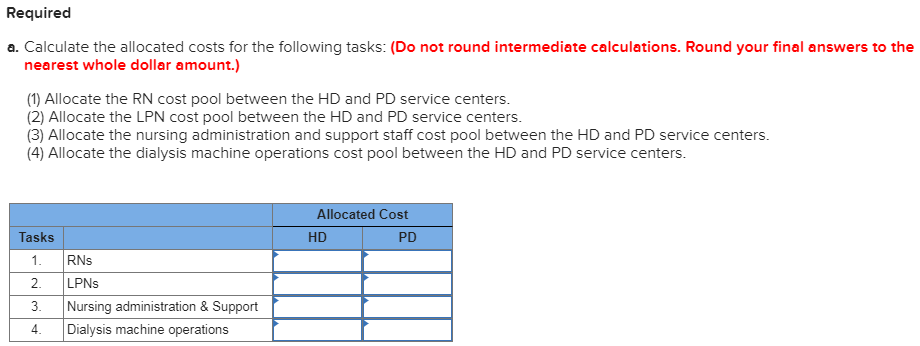Question
A dialysis clinic provides two types of treatment for its patients. Hemodialysis (HD), an in-house treatment, requires that patients visit the clinic three times each
A dialysis clinic provides two types of treatment for its patients. Hemodialysis (HD), an in-house treatment, requires that patients visit the clinic three times each week for dialysis treatments. Peritoneal dialysis (PD) permits patients to self-administer their treatments at home on a daily basis. On average, the clinic serves 102 HD patients and 62 PD patients. A recent development caused clinic administrators to develop a keen interest in cost measurement for the two separate services. Managed care plans such as HMOs began to pay treatment providers a fixed payment per insured participant regardless of the level of services provided by the clinic. With fixed fee revenues, the clinic was forced to control costs to ensure profitability. As a result, knowing the cost to provide HD versus PD services was critically important for the clinic. It needed accurate cost measurements to answer the following questions. Were both services profitable, or was one service carrying the burden of the other service? Should advertising be directed toward acquiring HD or PD patients? Should the clinic eliminate HMO service?
Management suspected the existing cost allocation system was inaccurate in measuring the true cost of providing the respective services; it had been developed in response to Medicare reporting requirements. It allocated costs between HD and PD based on the ratio of cost to charges (RCC). In other words, RCC allocates indirect costs in proportion to revenues. To illustrate, consider the allocation of $884,480 of indirect nursing services costs, which are allocated to the two treatment groups in relation to the revenue generated by each group. Given that the clinic generated total revenue of $3,022,325, an allocation rate of 0.2926489 per revenue dollar was established ($884,480 $3,022,325). This rate was multiplied by the proportionate share of revenue generated by each service category to produce the following allocation.



Step by Step Solution
There are 3 Steps involved in it
Step: 1

Get Instant Access to Expert-Tailored Solutions
See step-by-step solutions with expert insights and AI powered tools for academic success
Step: 2

Step: 3

Ace Your Homework with AI
Get the answers you need in no time with our AI-driven, step-by-step assistance
Get Started


